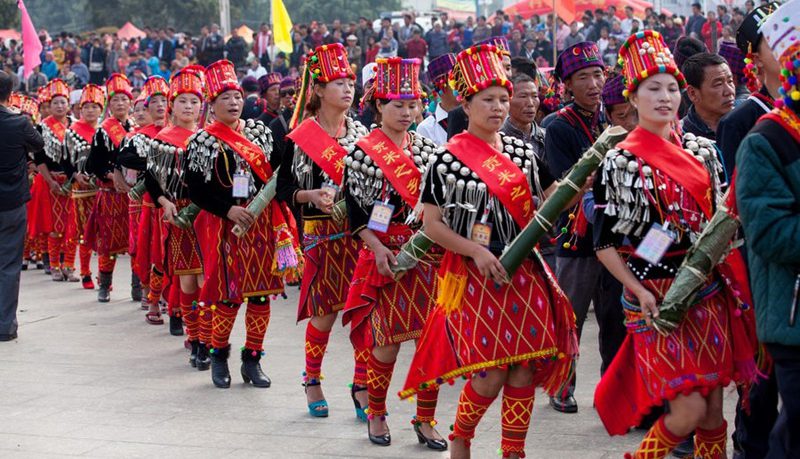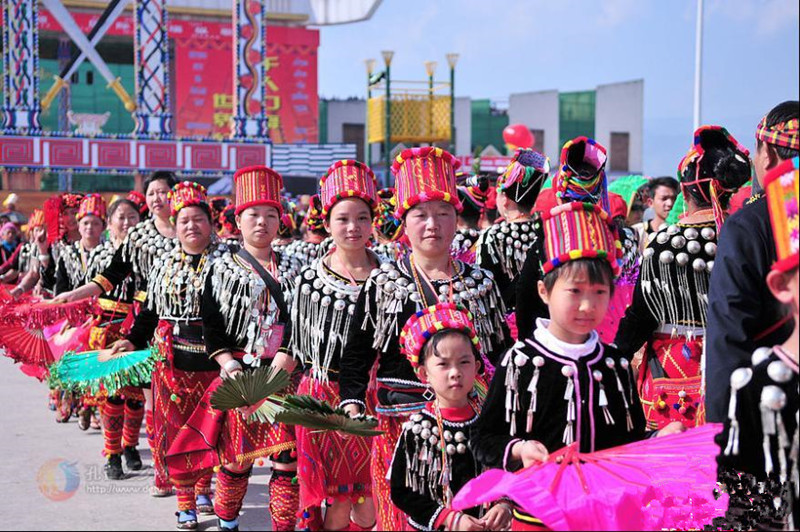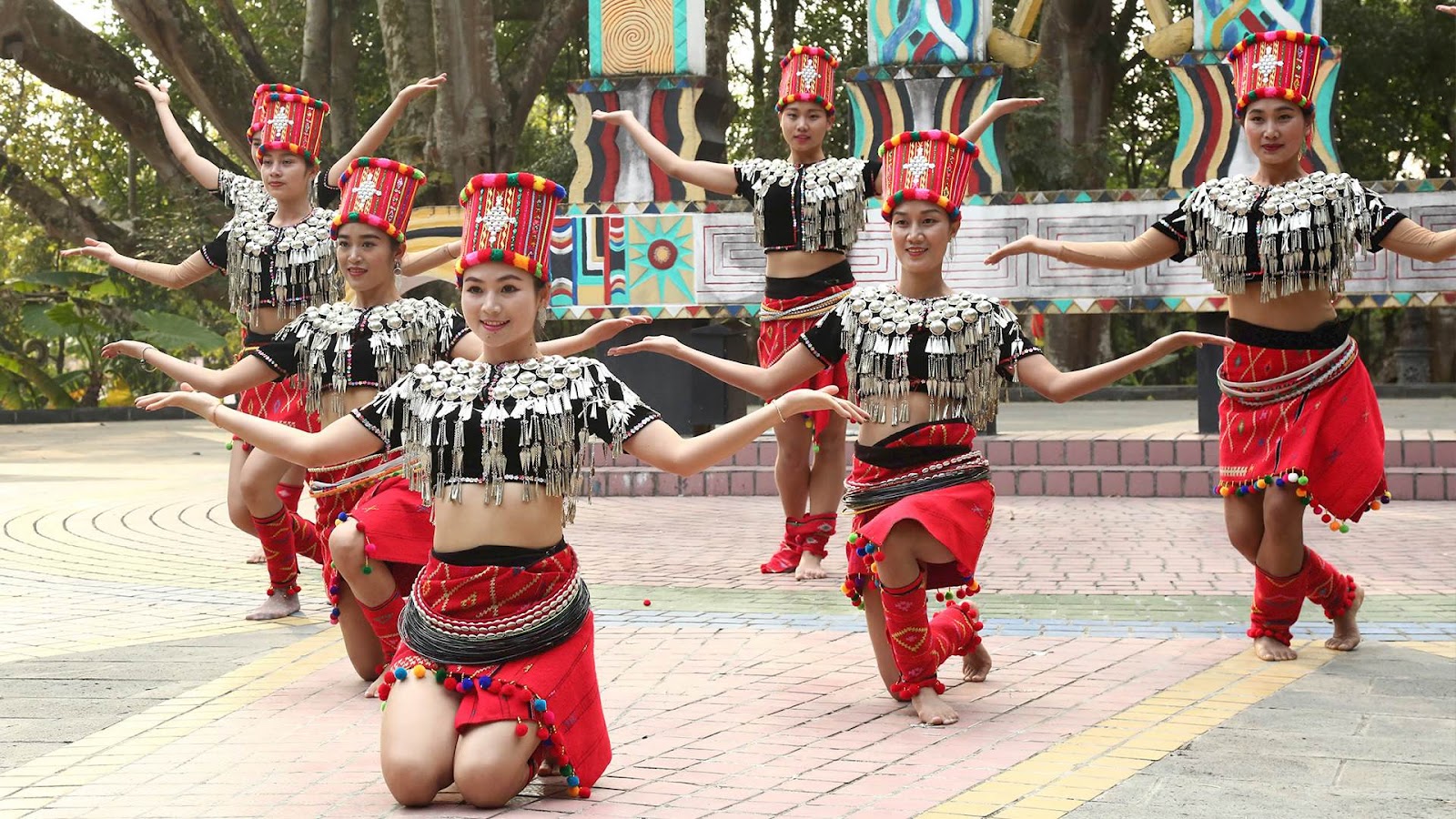MYTHOLOGIES OF THE GIN (JINGPO) TRIBE
The Gin or Jingpo tribe (Chinese: 京族; pinyin: Jīngzú; Yale: Gīng juhk; Vietnamese: người Kinh tại Trung Quốc) are a community of descendants of ethnic Vietnamese people living in China. They mainly live on an area called the Jing Islands (京族三岛) off the coast of Dongxing, Fangchenggang, in the Chinese autonomous region of Guangxi. These territories were administered by the Nguyễn dynasty, but were later ceded by the French to the Qing dynasty due to the convention 1887 of Sino-French war. Prior to 1958, the Việt were labelled as Yue with the Cantonese groups (Chinese: 族; pinyin: Yuèzú; Vietnamese: người Việt tại Trung Quốc), before the name “Kinh”, “Gin” or “Jing” was used to classify Vietnamese ethnic group separately. The Gin population was 33,112 as of 2020. This number does not include the 36,205 Vietnamese nationals studying or working in Mainland China recorded by the 2010 national population census.
The 18,700 people of this very small ethnic minority live in compact communities primarily in the three islands of Wanwei, Wutou and Shanxin in the Fangcheng Multi-ethnic Autonomous County, the Guangxi Zhuang Autonomous Region, near the Sino-Vietnamese border. About one quarter of them live among the Han and Zhuang ethnic groups in nearby counties and towns. The Gins live in a subtropical area with plenty of rainfall and rich mineral resources. The Beibu Gulf to its south is an ideal fishing ground. Of the more than 700 species of fish found there, over 200 are of great economic value and high yields. Pearls, sea horses and sea otters that grow in abundance are prized for their medicinal value. Seawater from the Beibu Gulf is good for salt making. The main crops there are rice, sweet potato, peanut, taro and millet, and sub-tropical fruits like papaya, banana and longan are also plentiful. Mineral deposits include iron, monazite, titanium, magnetite and silica. The large tracts of mangroves growing in marshy land along the coast are a rich source of tannin, an essential raw material for the tanning industry. The Gin people had their own script that was called Zinan. Created on the basis of the script of the Han people towards the end of the 13th century, it was found in old song books and religious scriptures. Most Gins read and write in the Han script because they have lived with Hans for a long time. They speak the Cantonese dialect.
The ancestors of the Gins emigrated from Vietnam to China in the early 16th century and first settled on the three uninhabited lands since people of Han and Zhuang ethnic group had populated the neighborhood. Shoulder to shoulder with the Hans and Zhuangs there, they developed the border areas together and sealed close relations in their joint endeavors over the centuries. The Gin costume is simple and practical. Traditionally, women wear tight-fitting, collarless short blouses buttoned in front plus a diamond-shaped top apron and broad black or brown trousers. When going out, they would put on a light colored gown with narrow sleeves. They also like earrings. Men wear long jackets reaching down to the knees and girdles. Now most people dress themselves like their Han neighbors though a few elderly women retain their tradition and a few young women coil their hair and dye their teeth black. Many Gins are believers of Buddhism or Taoism, with a few followers of Catholicism. They also celebrate the Lunar New Year–Spring Festival — and the Pure Brightness Festival, the Dragon Boat Festival and the Mid-Autumn Festival like the Hans.
The Gin (Jing) ethnic minority has a small population of only 22,517, according to the census taken in 2000. Most live on the three islands of the Guangxi Zhuang Autonomous Region, and the rest live and mingle with the Han, Zhuang and Yao ethnic groups. The Gin ethnic minority is a branch of the Yue nationality of Vietnam, so their spoken language is similar to Vietnamese while borrowing lots from the Chinese. Most of the Gin people believe in Taoism together with some thoughts of Buddhism and wizardry. Their beliefs greatly influence their lives. They believe there are many gods who control their life; such as the god who is said to have made Manito to pacify the sea. Changha Festival is the most magnificent festival of the Gin ethnic minority. Changha, in the Gin language, means singing. Varying from region to region, the festival date is not fixed. But on that day, all the women wear their flowery dresses and gather to sing in many forms. Duxian Qin (single-stringed harp) is their unique musical instrument, which together with Changha and bamboo dance are reputed as the three pearls of Gin art.

Jing nationality is a very small ethnic group with population of 22,517 who live in compact communities primarily in the three islands of Wanwei, Wutou and Shanxin in the Fangcheng Multi-ethnic Autonomous County, the Guangxi Zhuang Autonomous Region, near the Sino-Vietnamese border. About one quarter of them live among the Han and Zhuang ethnic groups in nearby counties and towns.The Jing ethnic group had their own script which was called Zinan. Created on the basis of the script of the Han people towards the end of the 13th century, it was found in old song books and religious scriptures. Most Jings read and write in the Han script because they have lived with Hans for a long time. They speak the Cantonese dialect. Jing costume is simple and practical. Traditionally, women wear tight-fitting, collarless short blouses buttoned in front plus a diamond-shaped top apron and broad black or brown trousers. When going out, they would put on a light colored gown with narrow sleeves. They also like earrings. Men wear long jackets reaching down to the knees and girdles. Now most people dress themselves like their Han neighbors though a few elderly women retain their tradition and a few young women coil their hair and dye their teeth black. Many Jings are believers of Buddhism or Taoism, with a few followers of Catholicism. They also celebrate the Lunar New Year – Spring Festival – and the Pure Brightness Festival, the Dragon Boat Festival and the Mid-Autumn Festival like the Hans.
The ancestors of the Jings emigrated from Vietnam to China in the early 16th century and first settled on the three uninhabited lands since the neighborhood had been populated by people of Han and Zhuang ethnic group. Shoulder to shoulder with the Hans and Zhuangs there, they developed the border areas together and sealed close relations in their joint endeavors over the centuries. There used to be some taboos, such as stepping over a fishing net placed on the beach, sitting on a new raft before it was launched, and stepping on the stove. But many old habits that hampered the growth of production have died out bit by bit. The Jing (Gin) ethnic minority has a small population of only 22,517, according to the census taken in 2000. Most live on the three islands of the Guangxi Zhuang Autonomous Region, and the rest live and mingle with the Han, Zhuang and Yao ethnic groups.
The ancestors of the Gin people immigrated to the area from Hải Phòng, Vietnam, during the 16th century and established communities on the three originally uninhabited islands of Wutou, Wanwei and Shanxin. During the Mạc dynasty (1533-1592), the land south of Shidawanshan Mountains were ceded to the Ming dynasty. Jiangping was a melting pot of Vietnamese and Chinese, however, the region was neglected by the Vietnamese government. During the 18th and 19th, the area became a hotbed of piracy (see: Pirates of the South China Coast). After the end of the Sino-French War in 1885, Jiangping, Bailong Peninsula and the Jing Islands were ceded by the French to Qing China.











































Comments
Post a Comment